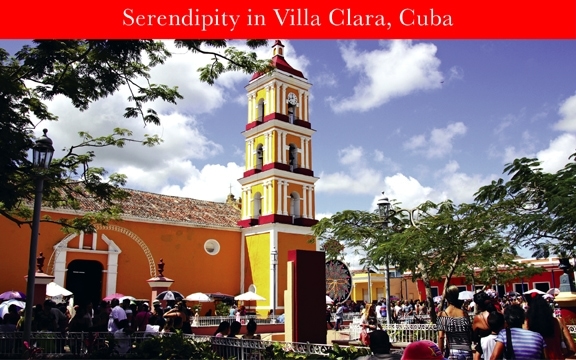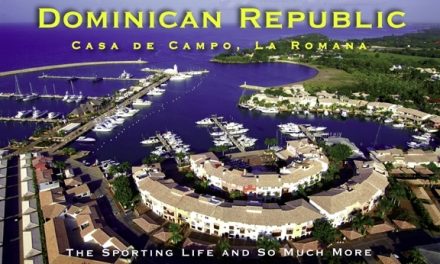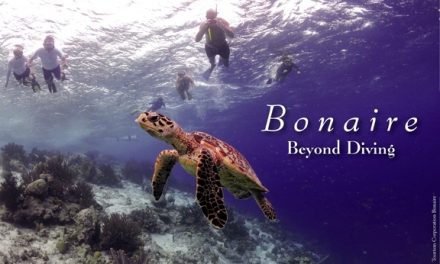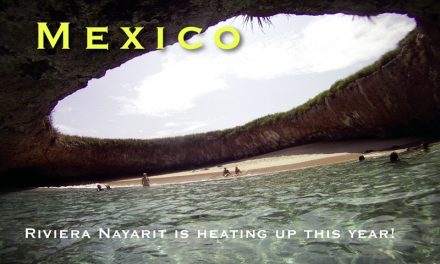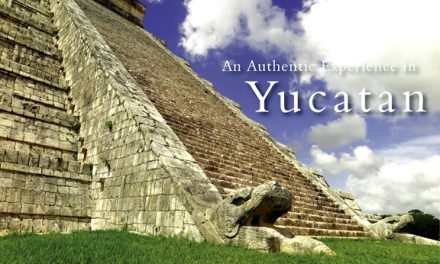Cuba
Serendipity in Villa Clara
Article and photography by Steve Gillick

The Driver’s Bar in the town of San Juan de los Remedios, in the northern Cuban province of Villa Clara, has a 1950’s retro look, thanks to the mural behind the bar. While they serve beer, mojitos and sandwiches to locals and visitors alike, the Bar is a magnet for curious photographers and art lovers. And luck would have it that as soon as I entered the bar to take some photos, I was greeted by the artist who had been commissioned to paint the mural as part of the restoration of the building in 2014. Roaidi Cartaya Carbajal was born in Remedios in 1972 and has become a recognizable artist and personality in Cuba for his depictions of life in his home town.
As for the 1957 black Dodge Coupe with bright yellow fins that was parked across from the Bar, that’s also one of Carbajal’s projects, where the cars of the 1950’s represent art, design, memories, Cuban history and Cuban culture. But as he was explaining this to me we were interrupted by a loud rumbling of motorcycles as a number of rough and tough looking men and women clad in leathers and Club colors, parked down the street. The leader, wearing mirrored sunglasses strode directly toward us and I bravely asked “Are you a friendly motorcycle gang or should I be concerned”?
His immediate response, accompanied by a charismatic smile, was “Oh we are very friendly”. And after some conversation and laughter, the Club members, who I later learned were award winners at various international and local competitions, lined up outside the bar for photos.
While a chance meeting with a notable artist and then a motorcycle club, within a few minutes of each other, may seem unusual, it’s a perfect example of what travelers refer to as ‘serendipity’: the unplanned occurrence of situations that are both positive and memorable. And in northern Cuba, serendipity comes in all shapes and forms: tranquility, wonderful food, smiling personalities, warm conversations, pink flamingos, music and history.
The Province of Villa Clara is located in the very north of central Cuba, not only touching the Atlantic Ocean, but actually including an archipelago or group of some 500 small islands (or Keys or Cayos). The original name of this historical area was, Las Villas or ‘The Cities’, referring to four cities founded in the 16th and 17th centuries, including San Juan de los Remedios which is believed to be Cuba’s third oldest city, dating to 1514.
But as Cuba fast-tracks the building of a modern tourism infrastructure in response to the needs of travellers, great emphasis has been placed on the Cayos. A Causeway, known as the Pedraplen, located about one hour’s drive from Santa Clara airport, joins Cayos Las Brujas, Cayo Ensenachos and Cayo Santa Maria, bringing visitors to a part of Cuba that many find irresistible. Case in point, George and Lori from Dieppe, New Brunswick, explained that they spent three weeks at the Dhawa Hotel on Las Brujas in 2017 and returned in 2018 for peace and quiet, sunrise walks on the beach, conversations with the friendly resort staff, and to simply relax and unwind from their busy ‘real-life’ schedules.
But the other value-factor for the couple was the food. While some visitors to Cuba have bemoaned the mediocre taste of food in general, it seems that the further East – and North – you travel in the country, the fresher the ingredients become and the better the preparation, presentation and taste of the dishes. And this is accomplished through training, international partnerships and the passion and creativity of a growing number of millennial chefs. We visited several properties on the three Cayos and not only were they well maintained and architecturally pleasing to the eye, but the food was quite commendable, from the ‘amuse bouches’ to entrees such as chicken, seafood, beef and pork, and on to the vegetables, salads, soups, and deserts. These hotels included Playa Cayo Santa Maria, Hotel Iberostar Ensenachos, Hotel Valentin Perla Blanca, Hotel Melia las Dunas, and Las Terrazas.
And in northern Cuba visitors can also enjoy farm fare at places such as the Hotel Granjita in Santa Clara and El Curujet Restaurant in Finca La Cabana outside of Remedios, where freshly grilled chicken, pork and corn are served with Moros (Beans and Rice), steamed vegetables and fruit for desert (bananas, papayas, pineapple, watermelon, mangoes and more).
An ice-cold Bucanero or Cristal beer is perfect on a hot Cuban afternoon but for the cocktail crowd, it’s good to know that aside from Cuban classics such as the Mojito, Cuba Libre or Pina Colada, the cocktail movement is very strong in this part of the country through the efforts of talented, trained mixologists.
They say that music is ubiquitous in Cuba and in the north it ranges from the addictive rhythms of Cuban folk tunes, to the iconic songs of the Buena Vista Social Club and Afro-Cuban rhythms and even includes The Beatles and Leonard Cohen. At a festival in the town of La Estrella, the Conga La Salsa Drum troupe entertained the crowds of locals and visitors with their hypnotic beat, and every so often, the drummers would form in a tight circle, beating the drums even harder, feeding off each other’s enthusiasm, and energizing the spectators.
The towns and cities in Villa Clara are perfect for exploring and soaking up the local culture. Santa Clara is the capital city of the province, best known for the Mausoleum of Che Guevara, the resting place of the Cuban revolutionary hero and some of his comrades, as well as the Museo Historico de la Revolucion, where visitors can learn more about Che’s life.
Sagua La Grande is a city in the western part of the province. The downtown area was declared a National Monument in 2011 in order to celebrate and preserve the colorful neoclassic, eclectic, modern and art nouveau architectural styles. A walk through the plazas and the streets leads to the Puente el Triunfo, the bridge that crosses the eponymous river that has become a symbol of the city.
Caibarien is the town near the southern end of the Causeway. The Old Sugar Mill, now a Museum, provides insight into the sugar cane industry (along with a sampling of freshly squeezed Sugar Cane Juice—with optional rum, of course) but the museum grounds also feature a collection of old locomotives, some which are perfect for photos and selfies. Visitors can even take a short train ride on one of the steam trains and get a glimpse of rural Cuba. A farmer, laboriously tilling the soil with a wooden plough and oxen took the time to wave at me. That’s Cuba for you!
As we were heading back to our accommodation on the Causeway, a bright flash of pink in one of the swampy areas reminded us that we were in the UNESCO-recognized Buenavista Biosphere Reserve, where nature-lovers, photographers and outdoor enthusiasts can not only follow hiking trails but also see flocks of American Pink Flamingos, Cormorants, Egrets, Stilts, Brown Pelicans and 270 or so other species of birds and wildlife.
Villa Clara is a great area to relax, explore, savour, converse, tap your feet, indulge in history, put on your dancing shoes, or just do nothing. For Cuba first-timers or return visitors, it offers those serendipitous experiences that translate into travel value.
www.gocuba.ca
Click on cover to view published article

